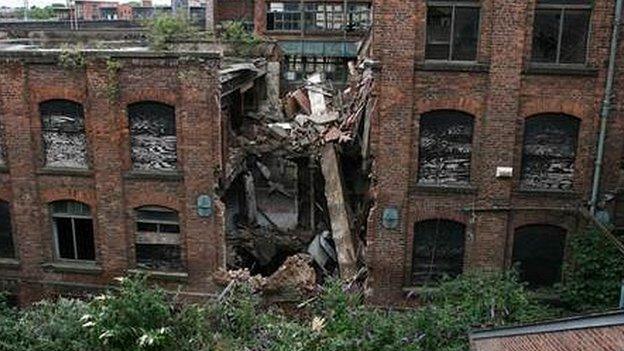Historic northern textile mills 'rapidly being lost' says charity
- Published
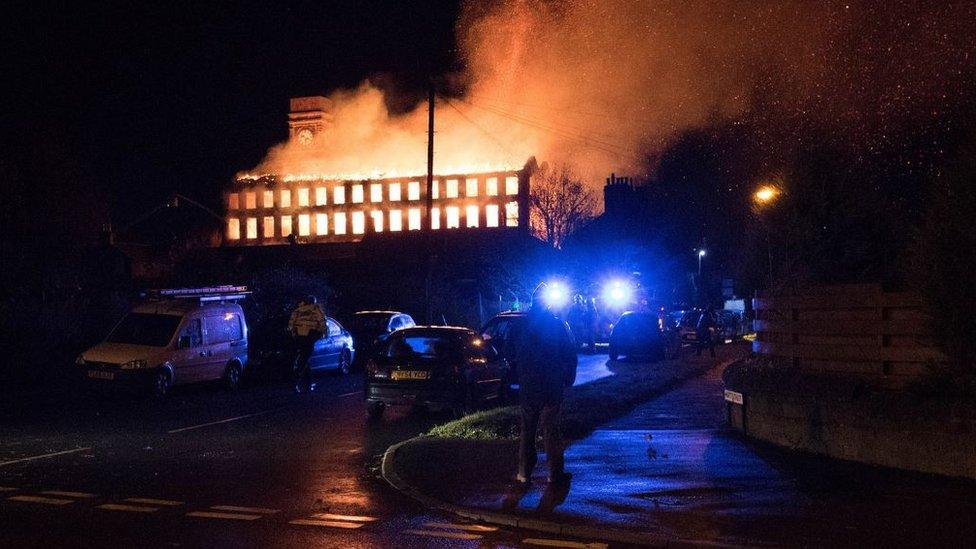
Newsome Mill, Huddersfield, West Yorkshire, on fire in 2016
Textile mills that helped shape the history and landscape of the north of England are "rapidly being lost", said Historic England.
Bradford, West Yorkshire, has seen more than 100 fires at historic mills since 2010, according to the public body.
Greater Manchester has lost almost half of its mills - including 66% in Salford - since the 1980s, it said.
Historic England said it hoped the "potential of our former industrial buildings" would be recognised.
A former cotton mill in Oldham, Greater Manchester is consumed by 200ft-high flames
The report 'Engines of Prosperity: new uses for old mills', external said the buildings came to define the urban landscape across Cheshire, Greater Manchester, Lancashire and West Yorkshire and were the workshop of the world.
From the late 18th Century onwards, the mills drove the industrial revolution and triggered technical innovation, new trade and transformed the transport network, said the heritage charity.
But many of the buildings face uncertain futures following the 20th Century decline in textile manufacturing.
Historic England also made a call to re-use 'original Northern Powerhouse' mills in West Yorkshire in 2016.
There is public support for the survival of many of the country's mills, according to Historic England which cited the 85% of respondents to its survey who said they did not want to see them demolished or replaced.
Pollsters You Gov questioned 2,028 people about the subject for Historic England.

John McGoldrick said Armley Mills near Leeds was "once the world's largest woollen mill"
John McGoldrick, curator of Armley Mills Industrial Museum near Leeds, said there is "no catch-all answer" to preserving mill buildings.
"A modern use for the mill depends on the circumstances. Some have massive historical significance but you must take each on its merits.
"Armley Mills is a perfect spot to tell the historical story of Leeds' textile and many other trades but Holmes Mill in Clitheroe, Lancashire has been redeveloped differently as a shopping and food outlet. It's just another way to expose visitors to industrial history.
"We would like to protect as many buildings as we can but we are also in the real world," he said.
Archive footage of Bolton cotton mills in 1951 goes on show in the city
Historic England said it hoped the reports would galvanise owners and developers to see the potential offered by conversion instead of demolition.


Castleton Mills was originally a flax mill and is Grade II listed
Conversion stories
Schemes to put grade II listed mills back to use include:
Holden Mill, in Bolton, a cotton spinning mill built in 1926, converted to 275 apartments
Castleton Mills in Leeds, a former flax mill built in 1836, now renovated to house offices and studios
Holmes Mill in Clitheroe, Lancashire dating back to 1823, transformed into an entertainment venue
Source; Historic England

- Published15 December 2016
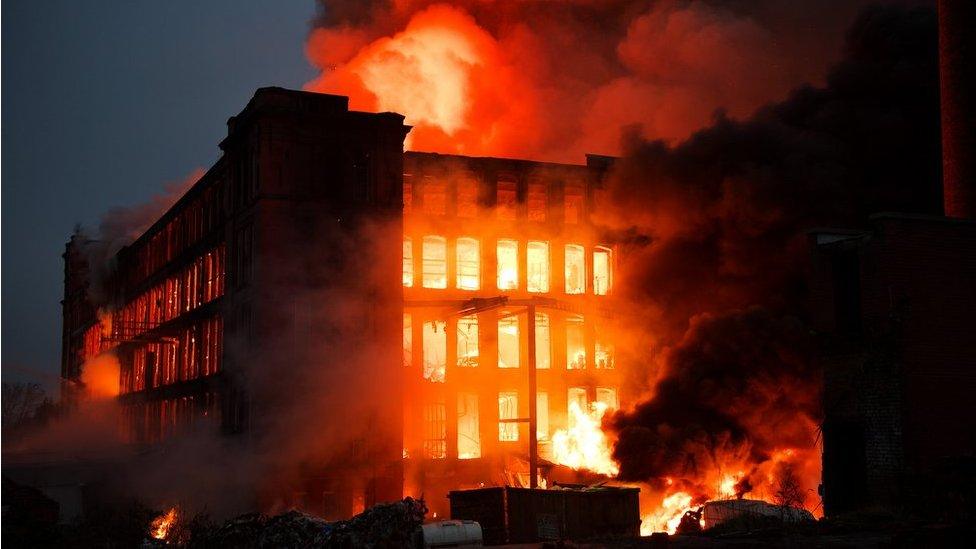
- Published17 November 2016

- Published30 June 2016

- Published21 June 2016
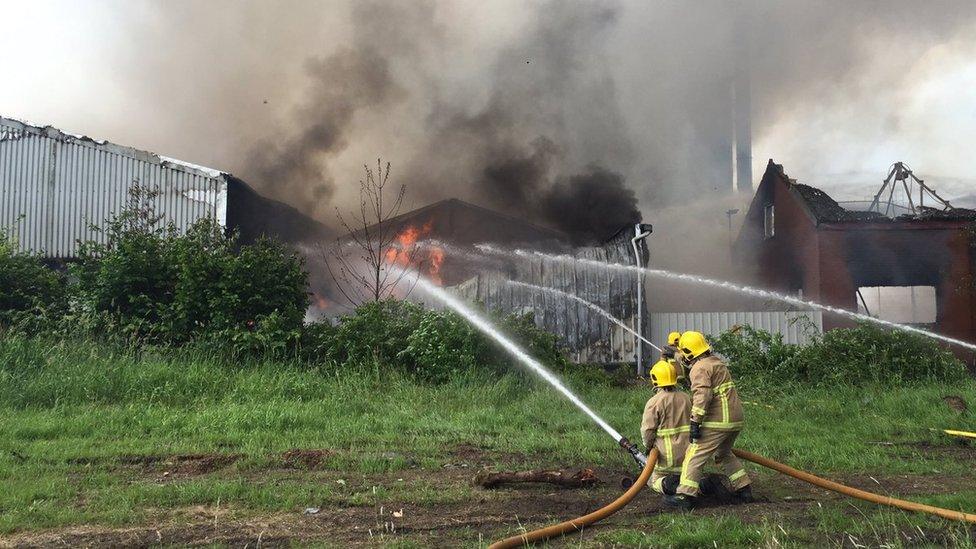
- Published16 March 2016
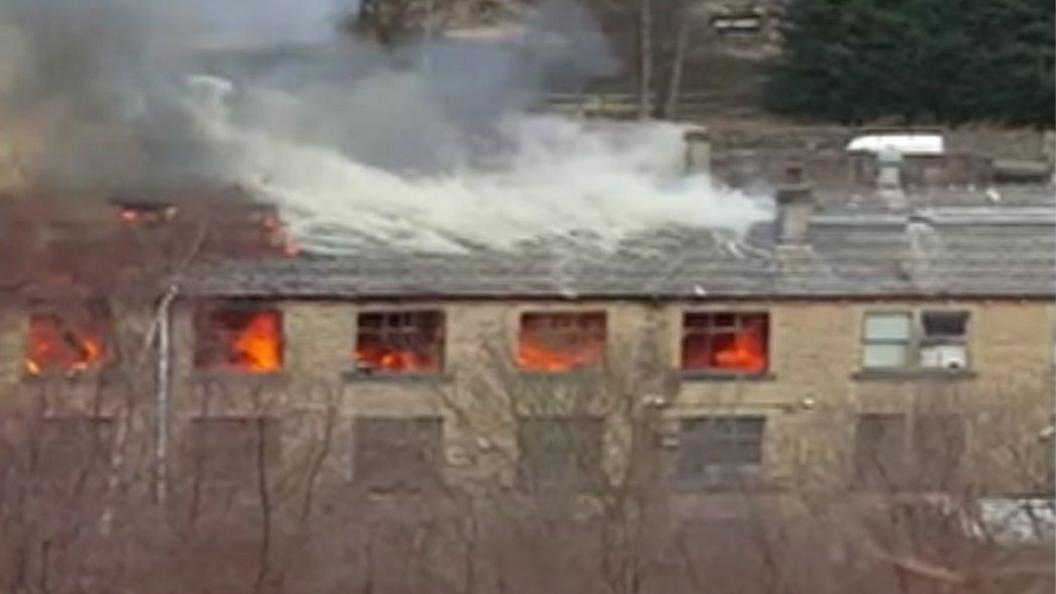
- Published1 February 2016

- Published29 January 2016
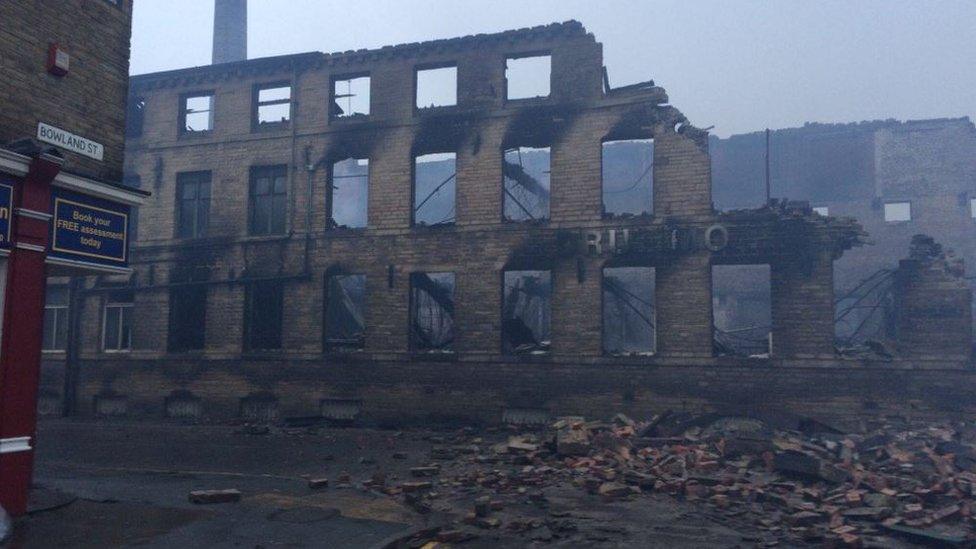
- Published27 July 2015
